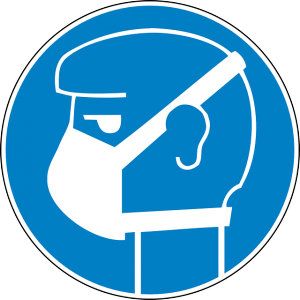Dr Karen McDonnell, RoSPA’s Occupational Health and Safety Policy Adviser and Head of RoSPA Scotland, looks at how health and safety practitioners can help prevent exposure to hazardous substances.
Within the food and drink manufacturing sector, occupational asthma and rhinitis (related mainly to exposure to flour and bakery dusts) and occupational dermatitis are major issues. Together they account for 12% of work-related ill-health annually. Occupational asthma is responsible for 33% of food industry compensation cases under the Department of Work and Pensions Industrial Injuries Scheme. Occupational dermatitis accounts for 10% of compensation cases under the scheme, and 13% of cases of occupational diseases reported to HSE under RIDDOR.
So where do OSH practitioners in this sector need to increase their focus?
 Dr Bob Rajan is an expert in this field and offers a practical approach, underpinned by decades of experience. He argues that these causes of ill-health can be prevented through:
Dr Bob Rajan is an expert in this field and offers a practical approach, underpinned by decades of experience. He argues that these causes of ill-health can be prevented through:
- Ensuring that hazards, risks and control measures are communicated effectively for impact and action
- Competently helping and ensuring that adequate and suitable exposure control measures are in place
- Checking and reviewing to ensure control measures are used and maintained correctly.
Work-related long chronic ill-health cases are not instantly visible and don’t have the immediate impact of safety-related incidents. This isn’t news to OSH professionals but we can affect a change in practice to reduce exposure to causal agents which can create a lasting change for workers.
In tandem with a change in practice, we need to tackle OSH admin failures. Many COSHH risk assessments have failed to document exactly what exposure control steps are needed or how they will be implemented before starting work. Employers have also failed to implement control strategies identified as a consequence of the risk assessment process.
Dr Rajan introduces the concept of the “unworried” or “unaware” worker who, as a result of the long latency associated with exposure to substances hazardous to health, just doesn’t see the relevance to themselves. Do you recognise this in your workplace? How do you engage, explain and encourage the “unworried and unaware” to think and act differently to reduce the impact on their health?
Be the anchor
Many questions and the answers are embedded in communicating correctly, completely and clearly whilst being compassionate and confident.
The OSH practitioner can act as an anchor – the reference point in an organisation who communicates OSH goals through creating a shared understanding of the issues, defines practice that is risk assessment-based and is prepared to share their experience. This can help avoid situations where workers ‘read between the lines’, making assumptions that put them at risk.
To quote Dr Bob Rajan, this approach “makes it easy for you” the OSH practitioner and “makes it easy for your colleagues” too.
It also brings to mind a quote from the actor Alan Alda: “Your assumptions are your windows on the world. Scrub them off every once in a while, or the light won’t come in.”
In our shared OSH world, this message resonates – keep the light coming into the windows of your workplace and how you think about your work as an OSH practitioner. It creates safer and healthier workplaces for all of us.
What makes us susceptible to burnout?
In this episode of the Safety & Health Podcast, ‘Burnout, stress and being human’, Heather Beach is joined by Stacy Thomson to discuss burnout, perfectionism and how to deal with burnout as an individual, as management and as an organisation.
We provide an insight on how to tackle burnout and why mental health is such a taboo subject, particularly in the workplace.

 Dr Bob Rajan is an expert in this field and offers a practical approach, underpinned by decades of experience. He argues that these causes of ill-health can be prevented through:
Dr Bob Rajan is an expert in this field and offers a practical approach, underpinned by decades of experience. He argues that these causes of ill-health can be prevented through:
Expediently ignoring ISO 45001 / ISO 45003 “Work Exposure Limits” as an element in presenteeism as so many effectively forced to “carry-on regardless” of self-harming having signed a waiver to Working Hours Directive and a standard little clause at the end of employment contracts saying “and anything else requested of you” !?
https://www.psypost.org/2023/08/anhedonia-new-study-provides-insight-into-an-overlooked-but-very-common-symptom-of-depression-167911